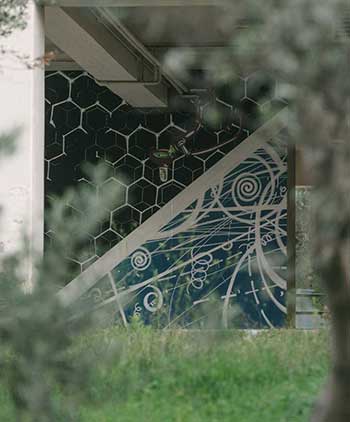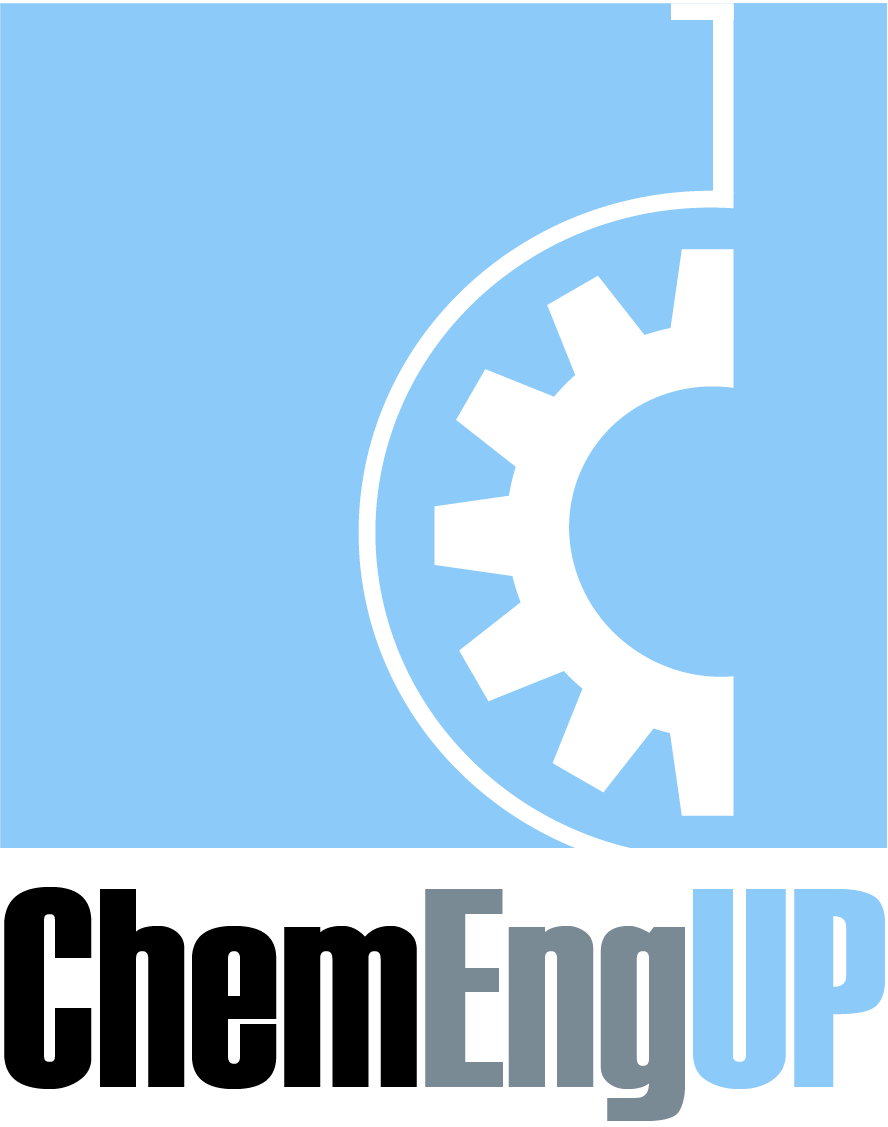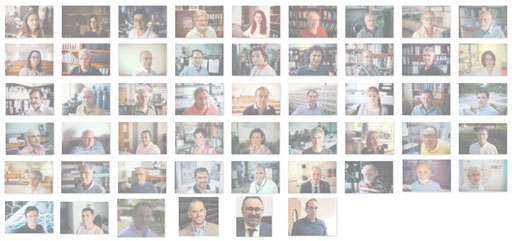- Τμήμα
Διοίκηση

- Προσωπικό
- Σπουδές
Σπουδές στο ΤΧΜ
Προπτυχιακά
Διπλωματικές Εργασίες
Μεταπτυχιακά
Διδακτορικό Δίπλωμα (PhD)
- Γενικές Πληροφορίες
- Νέες Αιτήσεις
- Κανονισμός
- Μαθήματα
- Προφορική Παρουσίαση
- Έρευνα
- Υποστήριξη Διατριβής
- Προηγούμενες Διατριβές
- Πρόγραμμα Εξετάσεων
Μεταπτυχιακό Πρόγραμμα (MSc)
Διατμηματικό ΠΜΣ (MSc)
- Φοιτητές
- Απόφοιτοι
- Έρευνα

Ερευνητική Δραστηριότητα στο ΤΧΜ
- Νέα & Εκδηλώσεις

Ανακοινώσεις
PhD Thesis Defence Presentations - Savvas Giannis Mastropetros

Τίτλος Παρουσίασης (Presentation Title): UTILIZATION OF EFFLUENT FROM BIOGAS PRODUCTION UNITS VIA CULTIVATION OF PHOTOSYNTHETIC MICROORGANISMS FOR THE PRODUCTION OF BIOTECHNOLOGICAL HIGH ADDED VALUE PRODUCTS
Presentation Type (Τύπος Παρουσίασης): Υποστήριξη Διδακτορικής Διατριβής
Ονοματεπώνυμο Ομιλητή (Speakers Full Name): Σάββας Γιάννης Μαστροπέτρος
Προέλευση Ομιλητή (Speakers Affiliation): University of Patras, Chemical Engineering
Seminar Room (Αίθουσα): Βιβλιοθήκη "Αλκιβιάδης Χ. Παγιατάκης"
Ημερομηνία: Τρί, 28 Νοε 2023,
Ώρα:
16:00 - 19:00
Διεύθυνση Διαδικτυακής Μετάδοσης: https://upatras-gr.zoom.us/j/97593173051?pwd=MXEzcngwa3JlaUsveXpwak1BVEJlQT09
Περίληψη (Abstract)
The treatment of wastewater from the current economy sectors, such as agriculture activities, stockraising and the food industry, is a global concern. Large wastewater volumes, resulting from the increased market needs, require new ideas and sustainable technologies to mitigate environmental problems. Recent developments in biotechnology offer the opportunity to combine urban and industrial wastewater treatment processes with the cultivation of photosynthetic microorganisms for nutrient recovery and the simultaneous production of biotechnological products with high added value. Microalgae and cyanobacteria are rich in proteins, sugars, and lipids. Depending on the type of the microorganism and the cultivation conditions, valuable pigments, antioxidant phenolic components and other biopolymers, such as polyesters, are formed.
Anaerobic digestion is a well-known method for waste treatment for biogas production and has been characterized as environmentally friendly. It can be applied on a large scale or locally in smaller plants. Despite the sufficient consumption of nutrients from the substrate during anaerobic digestion, significant amounts of digested residues, that need further treatment before disposal in natural habitats, are produced. In addition to the physicochemical methods of treating anaerobic effluent, biological processes are also evaluated to recover nutrients for biomass production and the bioremediation of this type of waste. The performance and sustainability of the biological systems regarding effluent management depends both on the quality characteristics of the waste and on the capabilities of the used microorganism.
This thesis aimed to study species of microalgae and cyanobacteria, for which the literature so far did not provide sufficient data on their behavior in substrates containing anaerobic digestion effluents. Interest was focused on species, isolated from their natural habitat, and the comparison with known photosynthetic microorganisms in wastewater processing and/or the production of metabolic products. Locally isolated microalgae and cyanobacteria show easy adaptation to a wide range of environmental conditions and their robust cultures are promising for industrial application. The study of local species continuously complements the already existing knowledge about photosynthetic microorganisms providing data in the context of finding suitable strategies for the utilization of liquid digestates.
Specifically, Chlorella vulgaris 211-11b (SAG, University of Göttingen), Chlorella sp. (isolated from its natural environment in Algeria), Phormidium sp. (isolated from a lagoon of Western Greece) and Chlorogloeopsis fritschii 1411-1a (SAG, University of Göttingen) were studied for the utilization of two types of digestate in batch photobioreactors. The cultures of the two Chlorella species were carried out in order to examine the assimilation of pollutants, organic carbon, nitrogen, and phosphorus, from the liquid digested residues with different initial ammonium nitrogen content. The different concentrations of ammonium nitrogen resulted after the physicochemical removal of gaseous ammonia and affected the biomass production and its fatty acid composition. The cultivation of Phormidium sp. in a synthetic medium and in a substrate of diluted digestate aimed to determine the effect of the light provided and the organic carbon concentration on the consumption of nutrients with the parallel production of the pigment, called phycocyanin. Finally, the cyanobacterium C. fritschii was evaluated in terms of the intracellular accumulation of poly-hydroxybutyrates through the consumption of acetic acid in pure artificial medium as well as in the anaerobic digestion effluent that came from agricultural residues treatment.
Eukaryotic microalgae have recently been recognized as a promising alternative for the efficient treatment of the liquid fraction of digestates. However, to date, a widely applied microalgae-based process is still absent, due to several limitations, which arise from the high ammonia content and the turbidity, which hinder photosynthetic biomass production. In this context, the purpose of the first part of the study was to investigate the performance of two Chlorella strains (the SAG 211-11b strain and one isolated in a natural environment in Algeria). The two microalgae were cultivated in different ammonium concentration levels after physicochemical ammonia removal. The experiments were performed in cylindrical photobioreactors under controlled pH (7.8 ± 0.2) and temperature (25 ± 2 °C). The cultures were monitored for biomass production and nutrient removal. At the beginning of the stationary phase (day 12) and after cell maturation (day 24), the produced biomass was analyzed for its biochemical components. Chlorella sp. showed better adaptation and growth in liquid digestates than C. vulgaris 211-11b, resulting in 1.43 mg biomass L−1 versus 1.02 mg L−1 with 25 mg N-NH4+ L−1. The organic load consumption and nutrients removal differed between the two strains and appeared to be affected by the different initial conditions. Regarding biomass quality, high initial N-NH4+ concentration led to high protein content, while low nitrogen levels favored fatty acid accumulation and inhibited pigment production. In particular, protein content was determined at 45 % of the biomass dry weight in all experimental scenarios with sufficient nitrogen amounts, while fatty acids approached 20 % in the case of the growth with the lowest N-NH4+. The comparison of the two species and the study of the physicochemical stripping of ammonia combined with the biological treatment of anaerobic digestion effluents enriched the relevant literature. From this research work a new strain of the genus Chorella emerged, whose applications can be even more competing and profitable.
As the biotechnological production of high-value products continues to generate research interest, even more photosynthetic microorganisms are being exploited for the synthesis of amino acids, fatty acids, pigments, and other biopolymers. Following the research study, the cyanobacterium Phormidium sp., isolated from a lagoon of Western Greece, was evaluated. for the production of the water-soluble pigment phycocyanin. Phycocyanin accumulation was favored by substrates with low organic load. Aiming to minimize substrate costs, the liquid fraction of the anaerobically digested agricultural residues was used. The use of the diluted digestate not only allowed Phormidium sp. to grow, but enhanced phycocyanin synthesis. The photobioreactors, provided with the lowest light intensity, showed increased phycocyanin accumulation (up to 2.5 % w/w) and resulted in a biomass concentration of 0.7 g L-1 regardless of the substrate type. When Phormidium sp. was inoculated into pure synthetic medium with 1 g glucose L-1, the phycocyanin concentration approached 10 mg L-1, while it was measured 1.75 times higher in the culture containing digestate, due to higher biomass production. Finally, providing higher light intensity to the cultures helped increase biomass accumulation and phycocyanin production, but did not improve cellular pigment content. The study of the locally isolated cyanobacterium proved the possibility of a sufficient digestate bioremediation and the simultaneous high added value pigments production. The optical characteristics of dark substrates can enhance phycocyanin production, improving the quality of usable light.
Given the environmental burden of conventional petrochemical plastic materials, the third results’ section dealt with the accumulation of poly-hydroxybutyrates (PHB) in photosynthetic microorganisms. A number of 10 species were tested in mixotrophic cultures on synthetic substrate in the presence of acetic acid, however only 4 of them were able to present the product of interest. Among the 9 eukaryotic microalgae, the cyanobacterium C. fritschii 1411-1a stood out, which formed PHB up to 4 % of the biomass dry weight. After the screening process, C. fritschii was cultured in photobioreactors with synthetic substrate and medium consisting of 10 % anaerobic effluent. Biomass and biopolymer production in the presence and absence of acetic acid was evaluated. This particular cyanobacterium was able to proliferate on an artificial substrate and simultaneously synthesize PHB consuming organic carbon. Biomass of 8.3% PHB was recovered. Exploiting only the anaerobic effluent, C. fritschii accumulated PHB, which corresponded to 5.1 % of the dry cell mass. In addition, lowering the temperature of the cultures, from 35 oC to ambient temperature (25 oC), led to the synthesis of intracellular PHB (7.2 % w/w), while inhibiting biomass production. The elimination of the substrate cost combined with the optimization of PHB synthesis by the specific cyanobacterium could contribute to the sustainable production of bioplastics.
In order to understand the results from the above experimental sections and to provide a complete commentary on them, mathematical modelling of the behavior of photosynthetic microorganisms was carried out. An attempt was made to describe the growth of the species to be studied in conjunction with the production of the desired products. In particular, for the Chlorella species, equations, which correlated initial substrate quality with final biomass production and fatty acid accumulation, were obtained. Regarding the cyanobacteria Phormidium sp. and C. fritschii, the mathematical models helped to explain the metabolic pathways towards phycocyanin and PHB accumulation respectively.
In summary, cultures of photosynthetic microorganisms are an important factor in the treatment of effluents and nutrient recovery to produce biomass and high value-added metabolic products. The production of biofuels, pharmaceutical compounds and other biopolymers offers new perspectives for the bioremediation of wastewater with the simultaneous biological production of resources. The study of applications of photosynthetic species can help reduce the human carbon footprint on the environment and promote a sustainable and environmentally friendly economy.
Σύντομο Βιογραφικό Ομιλητή (Speakers Short CV)
Short CV
Name: Savvas Giannis Mastropetros
Date of Birth: 18-05-1995
e-mail: savvasgiannismas@chemeng.upatras.gr
|
Education |
2018-2023 |
Doctoral thesis with the title: "UTILIZATION OF EFFLUENT FROM BIOGAS PRODUCTION UNITS VIA CULTIVATION OF PHOTOSYNTHETIC MICROORGANISMS FOR THE PRODUCTION OF BIOTECHNOLOGICAL HIGH ADDED VALUE PRODUCTS " |
|
|
2018 |
Chemical Engineering graduation (Diploma grade: 7.8) Diploma Thesis: "Treatment of wastewater through microalgae for the production of products of high added value" Attending the Health and Safety Seminar of the University of Patras |
|
|
2013 |
Undergraduate study program at the Chemical Engineering department of the University of Patras
High school (certificate grade: 19.2) |
|
Experience (Employment and Research Projects) |
2018 |
Internship: Assistant in charge of production line and food technology at "BAZIOTAKI Bros & Co O.e.", Dairy Products Industry, Tripoli Arcadia
|
|
|
2019-2021 |
Production of phenolic components from microalgae and characterization of biomass residue for utilization in fish farming units - AlgaePHESH –
|
|
|
2022-2023 |
Isolation and cultivation of local phytoplankton species from lagoons with the goal of mass production with antimicrobial substances, fatty acids, pigments and antioxidants – ALGAVISION –
|
|
Publications and Conferences |
2023 |
The 8th International Conference on Biorefinery and Biomanufacturing (oral presentation)
SG Mastropetros, K Tsigkou, Y Cladas, AK Priya, M Kornaros Marine Drugs 21 (6), 331
SG Mastropetros, K Pispas, D Zagklis, K Tsigkou, SS Ali, TU Ariyadasa, ... Journal of Environmental Chemical Engineering, 110580
|
|
|
2022 |
9th International Conference on Engineering for Waste and Biomass Valorization (WastEng22) (oral presentation)
Mathematical Modeling of Microalgal Growth during Anaerobic Digestion Effluent Bioremediation G Manthos, E Koutra, SG Mastropetros, D Zagklis, M Kornaros Water 14 (23), 3938
Biopolymers production from microalgae and cyanobacteria cultivated in wastewater: Recent advances SG Mastropetros, K Pispas, D Zagklis, SS Ali, M Kornaros Biotechnology Advances 60, 107999
V Andriopoulos, MD Gkioni, E Koutra, SG Mastropetros, FN Lamari, Antioxidants 11 (7), 1320
SS Ali, T Elsamahy, A Abdelfattah, AM Mustafa, MA Khalil, Fuel 329, 125397
Recent advances in wastewater microalgae-based biofuels production: A state-of-the-art review SS Ali, SG Mastropetros, M Schagerl, M Sakarika, T Elsamahy, ... Energy Reports 8, 13253-13280
Bioactive compounds from microalgae cultivated in wastewaters E Koutra, P Papavasileiou, V Andriopoulos, SG Mastropetros, M Kornaros An Integration of Phycoremediation Processes in Wastewater Treatment, 177-202
G Hotos, D Avramidou, SG Mastropetros, K Tsigkou, K Kouvara, ...Algal Research 69, 102935
Polyhydroxyalkanoates (PHAs) production from microalgae cultivated in wastewater SG Mastropetros, K Pispas, D Zagklis, T Elsamahy, S Ali, J Sun, ... Handbook of research on algae as a sustainable solution for food, energy …
Microalgae as a renewable resource for bioplastic production S Ali, MA Dar, M El-Sheekh, T Elsamahy, A Abdelfattah, E Abdelkarim, ... Handbook of research on algae as a sustainable solution for food, energy …
SG Mastropetros, E Koutra, M Amouri, M Aziza, SS Ali, M Kornaros Marine Drugs 20 (7), 415
Wastewater treatment coupled to algal biomass production M Sakarika, E Koutra, SG Mastropetros, S Giannakopoulos, M Kornaros An Integration of Phycoremediation Processes in Wastewater Treatment, 203-230
|
|
|
2021 |
Online Conference of Young Scientists, Mineral Resources - Environment - Chemical Engineering (oral presentation)
E Koutra, SG Mastropetros, SS Ali, K Tsigkou, M Kornaros Journal of Cleaner Production 280, 124352
|



